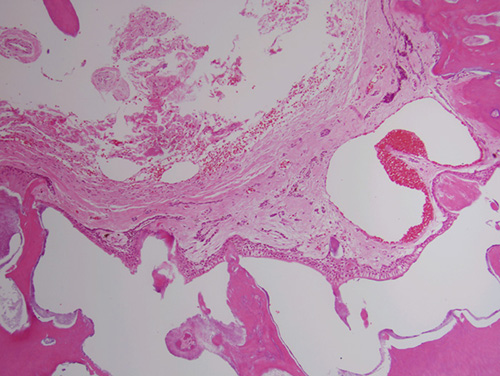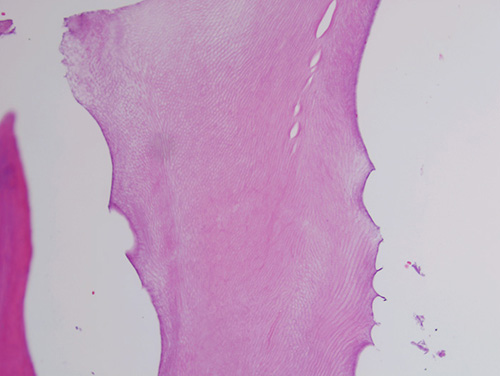Return to Case of the Month Archives
Mixed radiolucent radiopaque lesion associated with impacted tooth #32
Dolphine Oda, BDS, MSc
doda@u.washington.edu
Contributed by
Drs. John Heldridge & Richard T. Jones
Edmonds Oral Surgery and Jones Orthodontics, Seattle, WA
Case Summary and Diagnostic Information

This is a healthy 13-year old African American male who first presented for an initial orthodontic examination. Clinical examination of the area showed a normal range of the mandibular motion with no evidence of bony expansion. The overlying and surrounding oral mucosa was unremarkable.
Diagnostic Information Available
This is a healthy 13-year old African American male who first presented for an initial orthodontic examination. Radiographs revealed a large radiopaque and radiolucent lesion associated with an impacted tooth 32. It was approximately 3 x 3 x 4 cm in size. The lesion displaced the 3rd molar posteriorly and up the ramus. Clinical examination of the area showed a normal range of the mandibular motion with no evidence of bony expansion. The overlying and surrounding oral mucosa was unremarkable.
The patient’s medical history is unremarkable. He has no known allergies and is not on any medications.
This lesion was discovered on the initial orthodontic panoramic radiograph. There was a normal range of mandibular motion with no evidence of bony expansion. The oro-pharyngeal examination was unremarkable and oral mucosa was healthy. The panoramic (Fig 1) and periapical (not shown) radiographs demonstrate a large radiopaque mass associated with an impacted third molar (tooth #32). There was no evidence of cortical expansion or pain.

Figure 1. This is a panoramic view of the primary tumor taken at the initial presentation for orthodontic treatment. Note the impacted tooth #32 with a large radiopaque mass associated with the crown of the tooth.
The decalcified specimen revealed multiple tooth-like structures (Fig 3) surrounded by a dental follicle with epithelial lining (Fig 4). The tooth-like structures were for the most part coalesced and are made up of dentin, enamel matrix (Fig 5), cementum and dental pulp.

Figure 4. Higher power (x200) histology shows a mass of hard and soft tissue made up of tooth-like structures surrounded by a dental follicle. The latter is lined by epithelium and supported by a myxoid connective tissue wall.

Figure 5. High power (x400) histology shows enamel matrix with the fish-scale appearance.
After you have finished reviewing the available diagnostic information